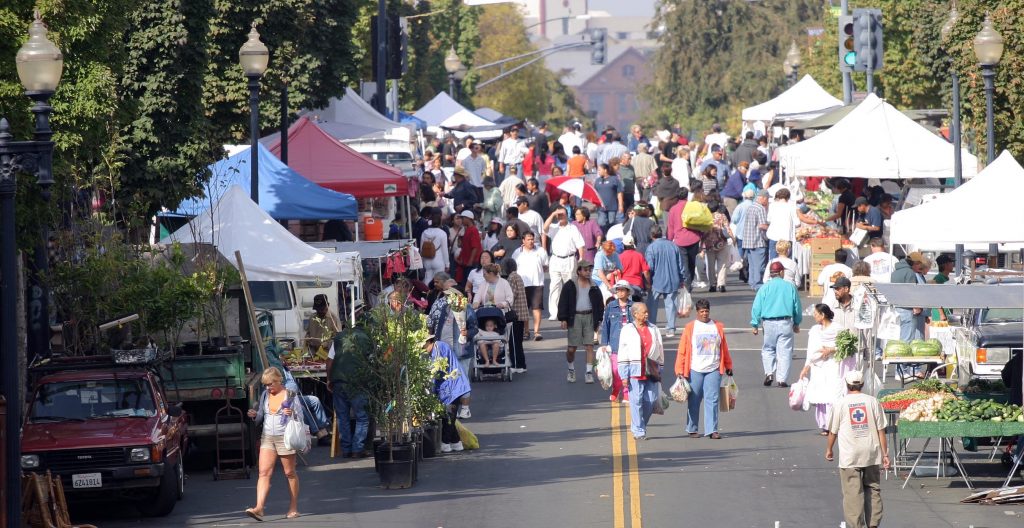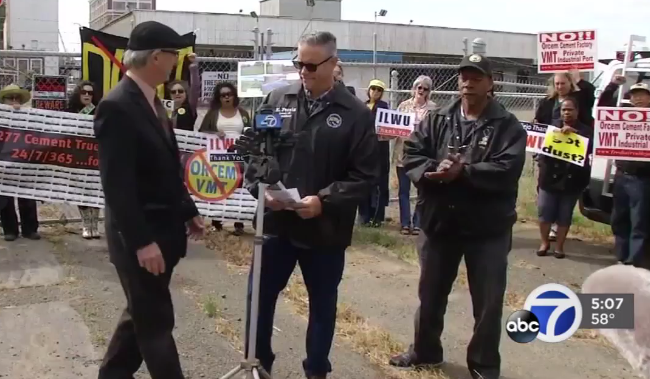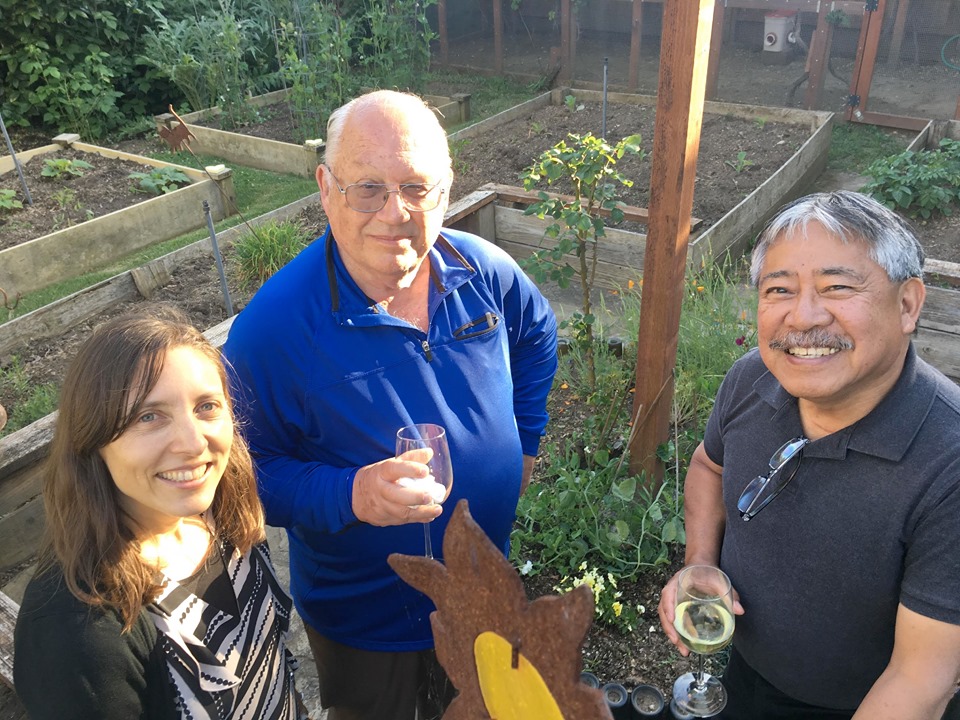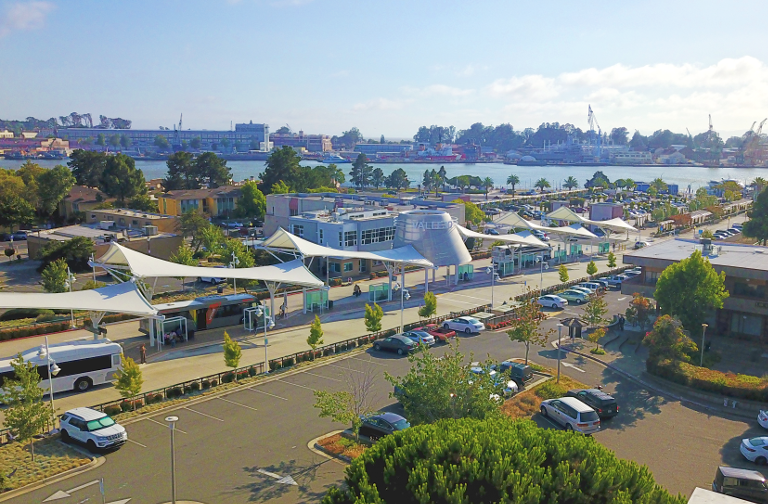What Americans Want in Cities
What makes a good city? I’ve been thinking a lot about this. What makes for a city people are happy living in, and want to stay in? One answer comes from the Gallup polling organization, with support from the Knight Foundation. A few years ago, Gallup published a thorough study called “Soul of the Community,” involving all 26 cities where Knight-Ridder newspapers are the primary print news sources. The study examined ten possible answers to the question of what keeps people attached to where they live. Its conclusions were, perhaps, surprising.
While the quality of schools (including colleges and universities), often ranked highly in people’s choice of where they want to live, did come in fourth among the Knight-Ridder cities, economy ranked seventh and public safety eighth. The cities are quite different. They range in size from Myrtle Beach, SC to Philadelphia, PA and are scattered throughout the United States. But in 2010, in ALL 26 cities surveyed, the same three answers came out on top, though not in the same order in every city.
What were they?
- Social offerings — Places for people to meet each other and the feeling that people in the community care about each other
It’s very important to residents to have access to free or low-cost social, cultural and artistic events that bring people together in community. Celebrations, festivals, music, dance, lots of art, and so forth. Farmers’ markets also seem to work well in this regard.
- Openness — How welcoming the community is to different types of people, including families with young children, minorities, and talented college graduates
People want to be welcomed into the life of their city. Friendliness counts for a lot, and newcomers also want agency; they want to be encouraged to participate in decision-making, not closed off by a longstanding elite power structure. Active and visible efforts to promote tolerance and diversity are very important.
- Aesthetics — The physical beauty of the community including the availability of parks and green spaces
People want to live in a community they consider beautiful, with good access to parks, nature and green open space.
These are reasonable wishes, of course, but many of us might be surprised to find them listed as the most appreciated attributes in every city Gallup surveyed.
A Case Study: Vallejo, California
I’ve been noticing these three qualities while making a film about Vallejo, California, identified by Brown University as “America’s most diverse city.” Vallejo looks a lot like America will look half a century from now. It is only 25 percent white. Each of the other demographic groups—Asian, African American and Hispanic—also make up about a quarter of the population. Add a smattering of Pacific Islanders and Native Americans, and you have a remarkably diverse community.
If America’s present polarization is any indication, there is currently a great deal of fear about such diversity. White nativist and racist sentiments are now shared by a significant part of the American population. For them, the “other” is something to be afraid of and stay away from. Immigrants are especially threatening. When Barack Obama became president, many older Americans who opposed him remarked that they wanted “our (code for white) America back.” Vallejo is distinctly NOT that America.

Social Offerings
And yet, as I immediately discovered about the city, it’s anything but a fearful place. Instead, it’s an example of how diverse groups of people can thrive together. At the Saturday morning farmers’ market (which closes several downtown blocks to traffic), Vallejo’s melting pot, and its warmth, are on full display. Both vendors and buyers are of every race, and interactions are consistently friendly. Farmers’ markets, now popping up all over America, are great places to build community. Bill McKibben reports that shoppers there engage in ten times as many conversations as they do in supermarkets.
I found the same warmth at local ethnic celebrations like Pista Sa Nayon, an annual June gathering remembering Philippine independence from Spain. The colorful and acrobatic dancers, the singers, and the battling martial artists are Filipino Americans, a group that accounts for a fifth of Vallejo’s population. But the thousands of delighted onlookers resemble a model United Nations. Everyone is welcome and feels so. A mixed-race couple I spoke with on the city’s waterfront, recent arrivals from Oakland drawn by Vallejo’s affordability, were quick to comment on the easy availability of interesting, and often free, cultural events made possible precisely because people from many different backgrounds call Vallejo home.
Vallejo’s Filipino American mayor understands how such heterogeneity and celebration make people want to stay in the city. Bob Sampayan spent three decades on the city’s police force, many of them as a homicide officer, before being elected as a representative to the city council and then, in 2016, as mayor. “Our diversity is our strength” he declares. And it’s not just racial and ethnic diversity. On the wall immediately behind Mayor Sampayan’s desk is a large, rainbow-colored Gay Pride flag that a constituent gave him.
Then, there are the arts. It’s art, perhaps more than anything else, that helped pull Vallejo out of a troubled period in the city’s past. For 150 years—ever since Mare Island, across the Napa River from downtown, became California’ first naval seaport, and grew into a major naval base where the great ships that fought the First and Second World Wars (and the nuclear submarines of the Cold War era) were built—Vallejo was, in effect, a company town. Its predominant source of jobs and income was the United States Navy. The Navy drew Filipinos in the years after the Spanish-American war to work on its ships, and thousands of African Americans during World War II to build them (most Hispanics came later, many to work in the burgeoning nearby Napa Valley wine industry).
Sailors and shipbuilders kept Vallejo afloat. But in 1996, the Navy pulled out. The city’s economy came crashing down, then started struggling back as commuters to other Bay Area cities began taking advantage of its great real estate deals. Artists, priced out of many Bay Area communities, found vacant storefronts in downtown Vallejo and turned them into studios. They found each other as well and began to build a culture. A few years after the Navy left, the federal government moved several other agencies, including the U.S. Forest Service, from downtown San Francisco to Mare Island.
But the economic shock wasn’t over. The housing crisis and the financial collapse of 2008 drove Vallejo into bankruptcy. Budget shortfalls cut the local police force in half, inviting gangs and drug dealers to set up shop and use the city as a hub for their Bay Area operations. Vallejo became quickly known as a dangerous place and one of the murder capitals of the state. A virtual war between the gangs and the whittled-down police force resulted in frequent death. But as the national economy improved, so did Vallejo’s, and more economic refugees from the Bay Area’s inflation-crazed cities bought homes or rented there. They found a welcoming community that encouraged them to be engaged.
Today, the arts are thriving. Downtown galleries attract many to Second Friday art walks, while events at the newly revitalized Empress Theater attract sizable crowds. Much of the art is quirky and fun, part of a genre called “Steampunk,” which includes wacky spoofs of the Victorian-era age of steam. Mayor Sampayan calls himself “America’s first steampunk mayor,” and rides in the local winter Mad Hatter Parade, decked out in a top hat and aviator goggles and driving either a Jules Verne-like rocket car or his colorful “diversity cab,” a large tricycle he built himself, based on examples from the Philippines. He gives rides to anyone. An artists’ collective called Obtainium Works designs other bizarre vehicles, including a three-story Victorian home on wheels that’s a regular at Nevada’s “Burning Man” celebration.
Openness
Vallejo’s arts and diverse cultural offerings provide for the first asset discovered by Gallup. They bring people together to enjoy each other’s company and help build a sense of community. With so many newcomers welcomed to the city, it’s also an immediately friendly place—everyone I talk to mentions that. And its civic engagement is almost legendary for a town of Vallejo’s size—120,000. So that’s number two.
Volunteering is widely popular, exemplified by Hannah Dunton, a thoughtful millennial who donates her time to several organizations. Not long ago, she completed a solo hike of the 2600-mile Pacific Crest Trail from Mexico to Canada, celebrated in the Cheryl Strayed novel, Wild. Hannah often reflects on the lessons she learned—that happiness comes from friends, beauty, a sense of purpose, not a lot of stuff. She lives simply and flies kites, both as a hobby and a form of meditation. Keeping a beautiful kite from crashing on Vallejo’s windy waterfront requires full concentration and allows Dunton to de-stress from her daily job at PG & E, the giant California public utility company.
Peter Brooks, a public relations specialist who moved to Vallejo a decade ago to escape escalating San Francisco real estate prices, told me he thought the move was temporary. “I never thought I’d be here ten years,” he says. “Now I’ll never leave. Most people here feel this way. This is a great place and we’ve gotten active to keep it that way and build on it.”

Aesthetics
Brooks’ own engagement stems from the love for aesthetics that Gallup discovered was the number three asset for its 26 Knight-Ridder cities. As a leader of Fresh Air Vallejo, a local non-profit, Brooks helped spearhead efforts to prevent the opening of a cement factory on Vallejo’s Napa River waterfront. While the Irish company that would have owned the plant called it a sustainable recycling effort to turn reclaimed concrete from destroyed buildings and roads into new cement (its slogan was “cementing a Green Vallejo”), locals like Peter feared the destruction of potentially beautiful land along the river and massive dust pollution. African American families living near the plant considered it a form of “environmental racism” that would exacerbate their children’s already high rates of asthma.
The battle lasted for four years. Proponents included some businesses and members of the building trades and other unions who thought the project would mean many new jobs. A few other unions, most notably the ILWU, joined the environmental opposition. The city planning commission rejected the project and, with popular sentiment running strongly against the plant, the city council was prepared to say NO to a requested permit when the company owning the land suddenly cried “uncle” and the project was dropped.
Peter Brooks told me the deciding issue was beauty. The people of Vallejo wanted parks and trails along their waterfront, not train tracks and cement trucks, noise and dust. “They wanted a beautiful waterfront. They want Vallejo to be a beautiful city,” Brooks said, adding that it was just like the line from the ending of the 1934 move King Kong. “It was beauty that killed the beast,” he observed with a smile.
Gallup suggests that part of what makes a city “aesthetically pleasing” is easy access to nature, parks, and green space. Vallejo’s unusual development as a Navy town has left it with many opportunities to improve its natural amenities. In contrast to much of the overbuilt and dense Bay Area, it’s a low-rise city with plenty of unused land. To the east, rolling and grassy hills support cattle ranching and hiking trails. They have been protected by Open Space legislation but are likely to feel renewed pressure from developers eager to turn them into subdivisions in one of the world’s prime real estate markets.
Steve Dunsky, a U.S. Forest Service video producer in Vallejo, and I walked one of the hillside trails with Mayor Sampayan and his wife Ramona recently. They were lush green from a wet winter in California and dotted with multi-colored blooms of wildflowers. Sampayan loves to hike in those hills and insists that he will fight against any loss of the open space. He showed his wife where city workers had found a pack of mountain lion cubs near an old water tower. He is pleased that cougars and coyotes live so close to his city and wants to protect their habitat, calling humans the usurper here.
Across the wide and brackish Napa River from Vallejo’s waterfront is Mare Island, where the Navy once ruled—and left behind a toxic legacy that has taken years to clean up. Developers have designs on the flatter more northerly parts of the island, which also boasts artists’ studios, a new distillery, and the regional Forest Service offices. But the south end, which is hilly, rocky, and dotted with live oaks and other vegetation, is currently being maintained as a nature preserve. It’s run informally by Myrna Hayes, a cheerful woman who once suffered a traumatic brain injury, though with her knowledge of the area and articulate verbal skills, you’d never guess that. Her “Visitor Center” is unique—a collection of all things left by the Navy in a funky metal building that once housed ammunition. The objects aren’t really catalogued but Hayes knows what they all are.
When I visited, she was sharing the history of the place with a young couple from Holland who were excited about hiking and camping there. The visitor center is a haven for birds—wrens and swallows were busy feeding their young and making quite a racket. The Preserve’s downside is the common presence of rattlesnakes, but for Hayes they add to its charm. Hayes worries though about fire, a new normal in California in the era of droughts and climate change. She grew up in the town of Paradise, where her family’s home and everyone else’s was burned to the ground last year, leaving at least 85 people dead.

Nature in the City
Mare Island is on the Pacific Flyway, and its annual bird migrations have been enhanced by recent efforts to restore nearby Bay wetlands by breaching dikes on the Napa River. The birds have come back in large numbers, bringing binocular-wielding tourists with them. “They’ve made that area into a bird sanctuary,” Sampayan told me. “My favorite birds are the bald eagle, the osprey and the great snowy egret. You see them all out there and it is just amazing to see. You see sandpipers, herons, so many geese. I spend hours out there just watching these birds. Wildlife is coming back. The great snowy egret almost went extinct because they were being killed for their feathers for women’s hats. There were just a few thousand left but they’re back now. They are such gorgeous creatures to watch fly.”
But within the city, things are not yet so beautiful. Mayor Sampayan bemoans the empty lots full of weeds and trash and surrounded by chain link fencing. He deplores the graffiti that still adorns many buildings. They give the wrong first impression, he says. Sampayan would like to see some of this space used for parks that can connect Vallejo’s children with nature to a greater degree. He fears that too many of them spend little time outdoors and even less around natural settings rather than ball fields. He fell in love with Yosemite as a child in Salinas when his father took him there on vacation and has been a nature advocate ever since.
But new parks are expensive, and some people view them as a luxury. Not so say numerous studies about the impact of nature on health and happiness. In Oakland, 20 miles from Vallejo, physician Nooshin Razani of the Center for Nature and Health takes traumatized parents and children to parks to relieve their stress. Many other physicians are now following suit, some as part of the national organization Parks Rx, which has recently begun working in Vallejo.
Sampayan has local support for his natural wishes. Rue Mapp, the founder of Outdoor Afro, recently moved to Vallejo. A tall and commanding presence, Mapp had been living in Oakland. She started Outdoor Afro because, as a University of California-trained biologist, she’d become increasingly aware of the need to reconnect fellow African Americans and other people of color with the outdoors, and especially with natural settings. For many blacks, she told me, the woods conjured frightening memories of KKK lynchings in the South, memories still strong decades after they’d come to work in northern cities like Vallejo.
Even short trips to local parks or time spent outside for a family barbecue make a difference, Mapp says. Besides its friendliness and affordability, Vallejo’s emphasis on the arts appealed to Mapp. She uses a biological reference to talk about it. “Artists, I’ve always felt, are the indicator species of any city,” she observes. “When the artists are healthy and thrive, so does the city. When they are driven out by gentrification or other causes, cities lose some of their soul.”
The U.S. Forest Service, with its Region 5 (California) headquarters in Vallejo, has been trying to strengthen the children/nature connection for many years. But when Steve Dunsky, a video producer, and other U.S. Forest Service staffers were planning to celebrate the 50th anniversary of the Wilderness Act in 2014, they quickly discovered that few youngsters in the city had ever been in a wilderness or even knew what one was. Together with other members of the community, they decided to honor nature closer to home instead. They had to bring the wilds to the kids instead of vice versa.
Since that year, Vallejo’s Visions of the Wild festival in September has grown steadily, offering opportunities for hiking, kayaking, boat tours with naturalists on the Napa River, and even a “mobile ranger station” downtown, complete with a Smokey Bear and children’s activities. The ranger station was designed by Shannon O’Hare, a founder of the Obtainium Works arts collective, another symbol of the symbiosis between art and nature’s beauty in the city. Dunsky also curates an environmental film festival in the Empress Theater during Visions of the Wild. It’s a model he and Mayor Sampayan see as applicable in many cities.
Getting from Here to There
Yet despite all this progress, Vallejo’s future is unclear. The city still lacks a vibrant downtown except during events like the farmers’ market and art walks. There is hardly any traffic congestion and the sidewalks often seem empty. Almost unbelievably, parking is still free (for two hours) in the city center. But new bookstores and cafes are opening, and with potential major job-creating development coming to Mare Island, one can expect more, and sooner rather than later. As the city appeals to more Bay Area refugees with high incomes, real estate prices are beginning to rise. Lower-income residents are already seeing major rent increases, a trend Sampayan is determined to resist.
“I have a lot of concern about that because Vallejo has a lot of elderly,” he told me. “We have some folks that are financially challenged and as rents go up those folks are displaced. I’ve heard horror story after horror story of people that have lost their place because their landlord knew that if they put fresh paint on it and fixed a few things on it and threw some plants out front that they could get several hundred dollars more a month.”
But his power is limited. Some artists have lost their downtown studios as owners speculate regarding future tenants. Beauty’s appeal also creates its Achilles’ heel—gentrification. San Francisco is only a beautiful one-hour ferry ride across the Bay. Even many of the city’s wealthy are beginning to look elsewhere to live and Vallejo is certainly part of the buzz. As they come, the income gap in Vallejo will increase. How to save the city’s working-class character and diversity is the question for Mayor Bob. I watched recently as he listened to ideas offered by Anamaria Aristizabal, a visitor to his city from the South American metropolis of Bogota, Columbia.

As Aristizabal explained, Bogota in the 1990s suffered from extreme inequality, poor health and massive traffic congestion, not to mention the stray bullets of an ongoing civil war. Elected to stem the social problems that plagued the city of eight million, Mayor Enrique Penalosa was part of a line of reformers who had reduced corruption and brought new transparency to government. But he surmised that unless the poor had power and political agency, efforts to reduce inequality would founder. He had an idea. Poor neighborhoods needed to know that someone in city hall cared before they would risk engaging in politics.
So Penalosa built hundreds of parks in poor neighborhoods, where children had feared to be outside. He added new libraries, giving the poor easier access to information. He created miles of beautiful bicycle paths, and a bus-rapid-transit system with its own highways to reduce the endless commutes that left so many of the poor too exhausted to get active. And at times, he closed city streets to cars, helping clean the air and offer healthy recreation. It worked. Bogota proved that a focus on parks, beauty, education, walking, and cycling could create a far more equitable and livable metropolis, and Penalosa has become a worldwide symbol of a smart new urbanism. After a stint teaching at Harvard, he is now mayor of Bogota again.
As Aristizabal explained all of this, Mayor Sampayan grew visibly excited about Vallejo’s own possibilities, and asked a series of questions. He refrained from his own speechmaking, and at the end of the meeting humbly thanked Anamaria for being an inspiration. He had a lot to think about, he told me later. One focus never far from his mind is sustainability. He wants to sharply reduce the use of fossil fuels, divest from the city’s fossil fuel investments, convert the bus system to electric vehicles, reduce pollution from the Sacramento and Napa Rivers that makes it dangerous to consume locally-caught fish, ramp up re-use and recycling and inspire children to understand the consequences of actions as simple as throwing away a plastic wrapper. He’d like his city to be an urban model for the Green New Deal.
In these hopes, he’s joined by Richard Fisher, a former star lineman for the nearby University of California football team. Fisher is a gentle giant, with long curly hair, a beard and a soft-spoken manner. A stay-at-home dad and husband of a physician, Fisher played in four bowl games and nearly made the pros, but instead has become an environmental activist for a whole new kind of urban community he calls “generous cities.” With its plentiful vacant land, Fisher believes that Vallejo could develop large-scale sustainable farms that might feed other cities as well as its own population. Its growing community garden movement and flourishing farmers’ market point the way to new approaches.
Fisher is also involved in multi-family experiments aimed toward creating more sustainable, less wasteful neighborhoods, a project led by Sustainable Solano, a local environmental group. There are other possibilities: a large-scale effort to increase the tree canopy in poor parts of the city could provide improvements in health, beauty and quality of life, while also helping to sequester carbon. The city had been doing this using state funds, but recently the project grant ran out. Mayor Sampayan hopes the Green New Deal will bring back the funds. So far, the Vallejo community seems to be rallying behind his vision. “Fortunately,” he says, “we here in California believe in climate change. We believe in the ecology of our land. We believe that we can make the positive changes that need to be made so that we have life on this planet.”
And not only life, but a good life.





